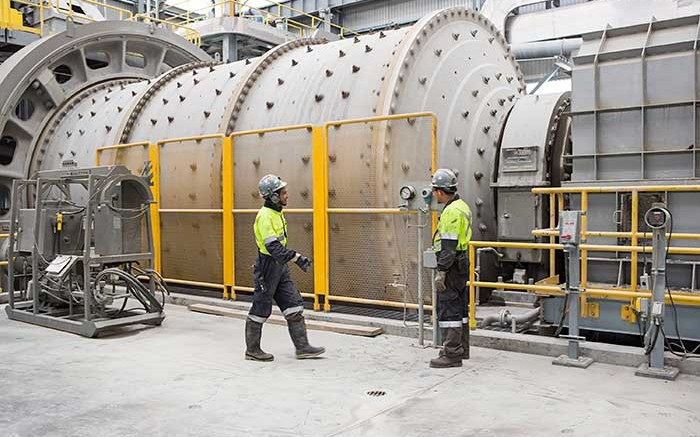There’s no slowing down for Tahoe Resources (TSX: THO; NYSE: TAHO).
The company, founded by former Goldcorp (TSX: G; NYSE: GG) CEO Kevin McArthur, put its Escobal silver-gold-lead-zinc mine in Guatemala in commercial production in January 2014, after acquiring the deposit from Goldcorp in 2010. (The major is Tahoe’s largest shareholder, with a 39% interest.) As analysts were applauding Escobal’s first full year of production, Tahoe announced a friendly $1.3-billion merger with Rio Alto Mining (TSX: RIO; NYSE: RIOM) in February 2015.
Rio Alto, headed up by Alex Black, has been having its own success in Peru, where it has been operating the low-cost La Arena heap-leach gold mine since 2011. Last August, Rio Alto bought developer Sulliden Gold for its Shahuindo heap-leach gold project in Peru. The junior gold producer had expected to develop Shahuindo for US$70 million, with first production slated for early 2016.
Under the merger deal, expected to close in April, Rio Alto shareholders will receive 0.227 of a Tahoe share and $0.001 in cash for each share held. The deal values Rio Alto at $4 per share, reflecting a 22% premium over its closing price on Feb. 6. Tahoe shareholders have approved the transaction, and Rio Alto shareholders are set to vote on the deal shortly.
The marriage marks an exciting chapter for Tahoe, as it adds another producing asset and development project to its portfolio, along with geographic diversification.
“It gives us a platform upon which we can now grow and compete with the other mid-tier companies, both on a financial and operational aspect,” McArthur, who will chair the merged company, said at the annual BMO Global Metals and Mining conference in February.
In 2014, Escobal produced 20.3 million oz. silver at all-in sustaining costs of US$8.96 per oz., net of by-product credits, while La Arena churned out 222,255 oz. gold, with all-in sustaining costs expected to fall between US$730 and US$765 per oz.
“We are in the lower cost range of both silver and gold companies in the market today,” said Black, who will become the CEO of the merged company.
The individual firms also benefit from strong balance sheets that, when combined, will give the new Tahoe “financial firepower” to explore other opportunities, McArthur says.
Despite the 20% decline in the silver price in 2014, Tahoe posted a US$350.3-million revenue and net earnings of US$90.8 million, or US62¢ per share. It has US$92 million in cash and equivalents and US$50 million in debt, while Rio Alto has a US$94-million cash position, and US$35 million in debt.
Once merged, Tahoe expects to pay off the outstanding debt. Production rates at Escobal and La Arena this year should be similar to 2014, with growth coming from the low-cost Shahuindo project in 2016. Shahuindo should deliver 100,000 oz. gold a year once in full production. Black says the project could become much larger, adding that a resource update is due out later this year.
Tahoe will keep paying its monthly dividend of US2¢ per share — which it began in December 2014 — as it builds Shahuindo, with plant construction starting in May.
Meanwhile in Guatemala, Tahoe is boosting Escobal’s mine and mill capacity from 3,500 tonnes per day to 4,500 tonnes per day by mid-2015. With the increased throughput, Escobal can hit 20 million oz. silver, despite processing lower-grade ore. The firm is also tweaking the asset to increase efficiencies and possibly lower costs.
Commenting on expanding to Guatemala, Black notes that the country is a younger version of Peru. “We see Guatemala being Peru maybe 20 or 30 years ago, and we’re happy to be doing business in Guatemala, because we have that experience of doing business in Peru.” However, he cautions that Guatemala still has “a long ways to go.”
He points out that the Guatemalan government has recently doubled its royalty rate to 10% amid the low commodity price environment. “The introduction of that royalty, which was a surprise for not only the mining industry, but also the telecommunications and cement industry in Guatemala, is an example of the immaturity of that political system. And we hope that we can encourage at a high level the change in the example of what Peru has become as a result of some good reforms that have occurred in the country,” he said. (Tahoe paid US$6 million for the 5% royalty last year.)
From 2015 to 2017, Tahoe estimates a 10% increase in its gold-equivalent production and an 18% growth in its operating margins. The combined firm would have a $3.9-billion market capitalization.


Be the first to comment on "Tahoe steamrolls through 2015"